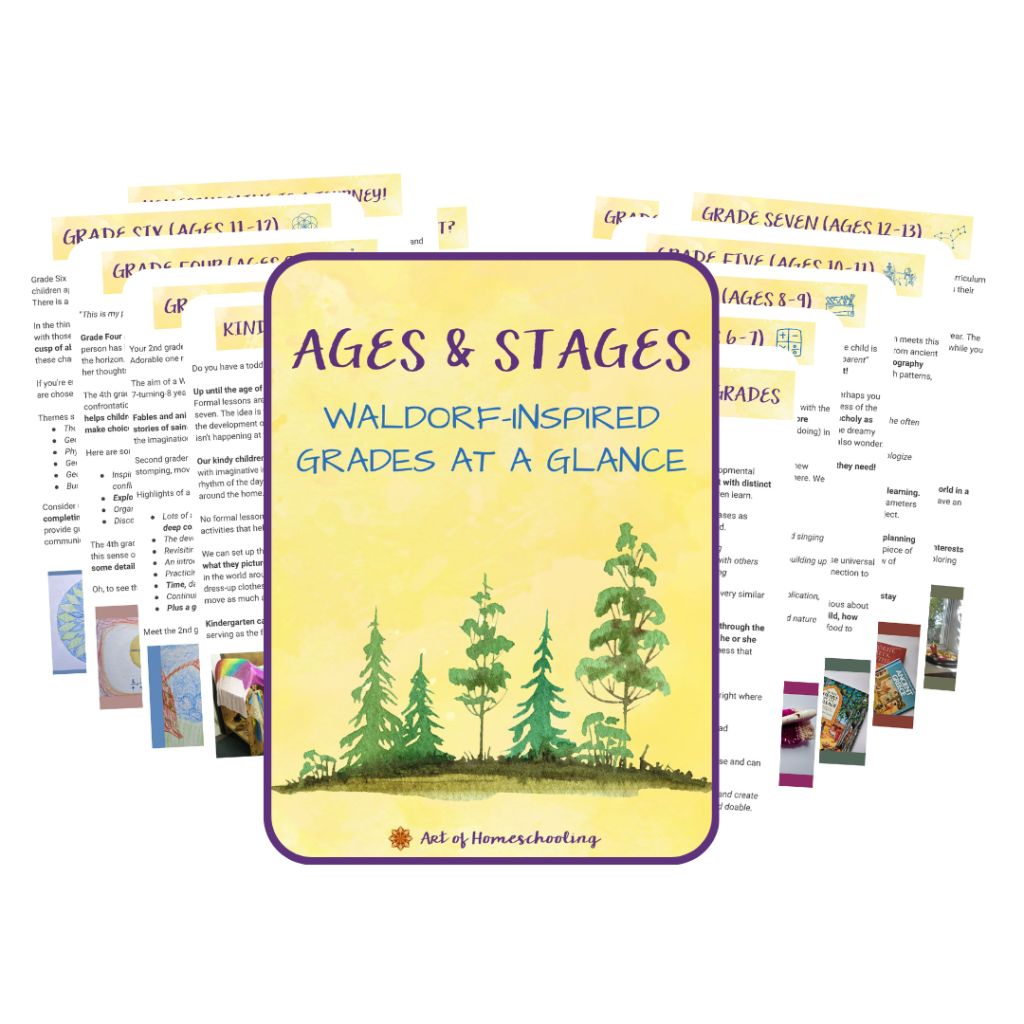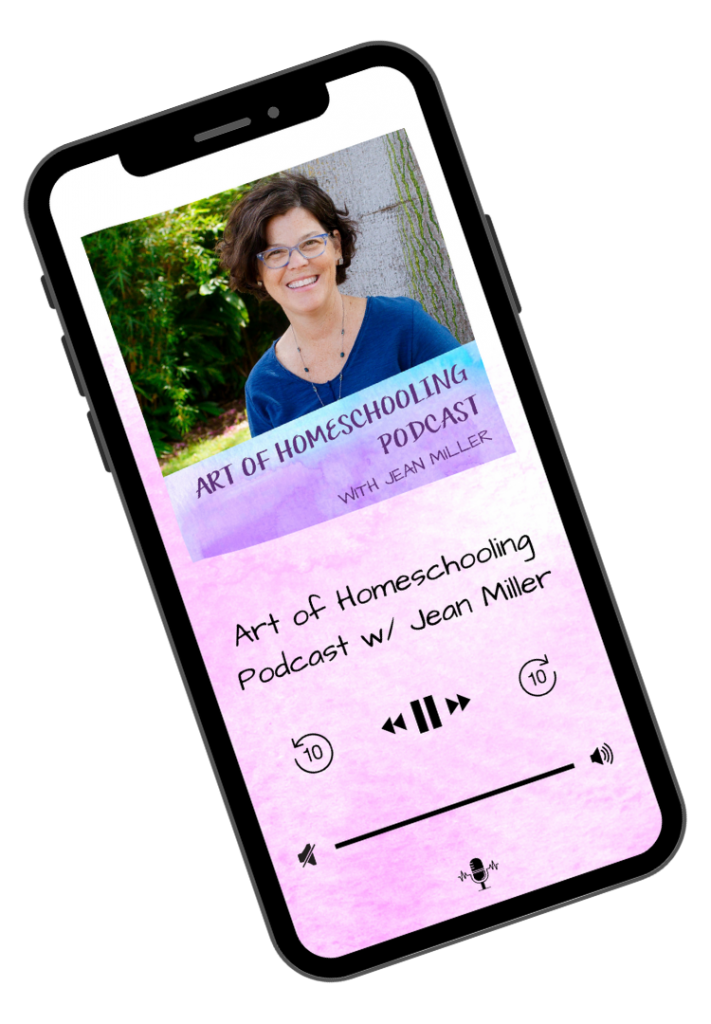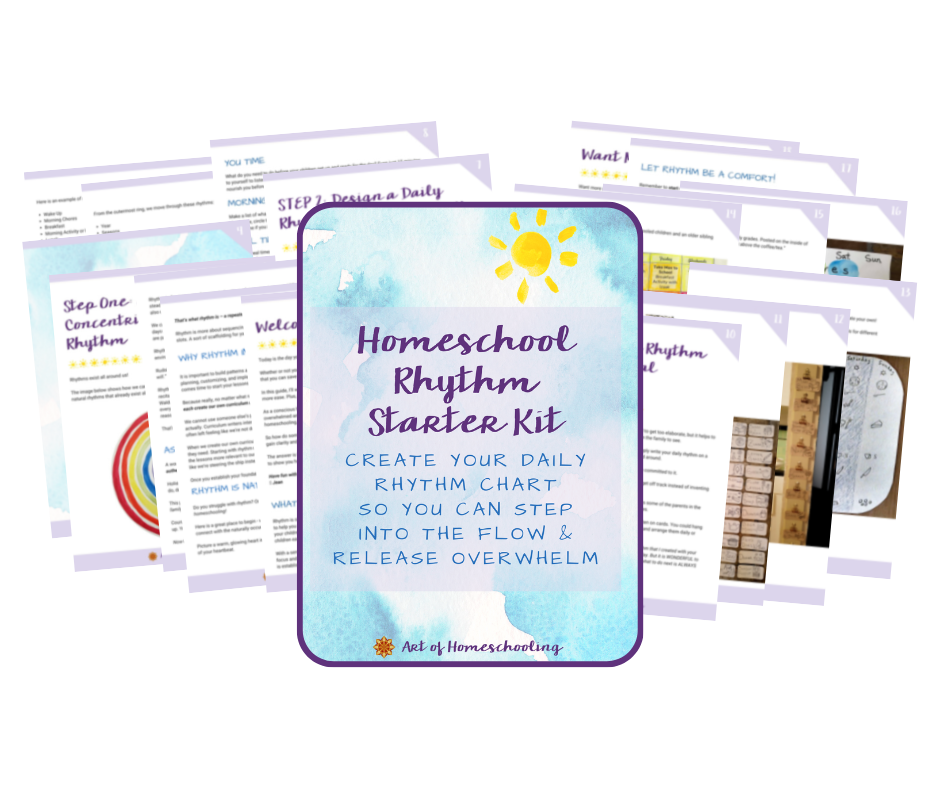Episode 192
What if a transformative third grade year is the key to your child’s blossoming independence? Today on the podcast, I’ll discuss homeschooling third grade and the supplies to gather for your Waldorf-inspired third grade basket.
This episode is a concise guide to creating a nurturing and educational environment for your third grader, filled with inspiration and practical advice.
Welcome to Episode 192 of the Art of Homeschooling podcast!
I’m Jean, veteran homeschool mum of over 25 years. I’m so happy you’re here for this series of episodes diving deep into each grade.
We’re working our way from Kindergarten through Eighth Grade, building a wonderful library for you to refer back to, again and again, whenever you need inspiration and guidance about Waldorf-inspired homeschooling in the grades.
Don’t miss the previous episodes in this series:
- Kindergarten ~ Episode 182: The Kindergarten Basket
- First Grade ~ Episode 185: The First Grade Basket
- Second Grade ~ Episode 187: The Second Grade Basket
So what about the third grade basket? Let’s get started!
Homeschooling Third Grade
Third grade is the year in which the child is “emerging from his long, strong preoccupation with his mother, or caretaking parent” (Gesell Institute of Human Development).
A child of this age is becoming more and more independent!
Developmentally, children in third grade are taking baby steps away from their childhood years and toward independence. This is often referred to as the “nine year change.”
Just remember that this path toward independence is a gradual process.
Teaching and parenting through the nine year change can be intimidating. Perhaps you can think back to your own childhood when you started to feel the limitlessness of the universe and the weight of self-awareness.
You may notice a touch of melancholy as your child navigates this shift. Fears may arise as the child starts to leave the dreamy state of young childhood, often resulting in more questions and self-doubt, and also wonder and awe.
The curriculum for third grade is designed to meet the child developmentally.
By developing independence, learning practical skills, and becoming more self-sufficient, children gain the confidence they need to feel at home in the world.
HANDS-ON LEARING IN THIRD GRADE:
- Carpentry & building
- Cooking & baking
- Fibers & clothing
- Sewing & weaving
- Gardening & composting
The universal theme of journeying toward independence is present in the story content for the third grade year. Creation stories and stories of the people of the Old Testament build on this, instilling a sense of wonder and appreciation for the universe, a connection to the source of life, and the courage to set out on one’s own journey.
The third grader can be preoccupied with learning how to fend for herself and curious about the origins of things. She wants to learn how to cook, how to sew, how to build, and how things work.
So he can say, “I can knit a scarf to keep myself warm, grow food to nourish myself, and build a lean-to to keep shelter from a storm.”
Homeschooling third grade is a wonder-filled adventure!
For more about the story content of third grade, don’t miss the Ages & Stages Guide: Waldorf-Inspired Grades at Glance.
Supplies for the Third Grade Homeschooling Basket
- Colored pencils ~ As your child’s view of the world becomes more granular, it’s time to transition from crayon drawing to colored pencil drawing. This is often an exciting event for the third grader.
- Hand tools ~ For including carpentry and building projects in your third grade year, you’ll want tools that are small enough for your child. They don’t have to be specifically child-sized tools.
Some ideas include a small hammer, a hand saw, a file or rasp, and a hand crank drill. - Garden tools ~ For gardening projects, it’s great to have a variety of tools such as a short-handled shovel, a trowel, a hand weeder, and a watering can.
Note: A toy shovel will not be able to withstand hard use. Short-handled shovels are easy to find at the hardware store. They have a handle about 12 to 18 inches long and a sharp spade for gardening. These are also wonderful to take to the beach if you want to dig a really big hole in the sand! - A variety of writing supplies ~ Your main lesson books in third grade may look a bit different than the traditional main lesson books in which you would record the learning by drawing and writing.
Here, you might choose to take photos of a project and keep a scrapbook, create labeling drawings and diagrams and collect them in a three-ring binder, or record lists and notes in a ruled notebook.
Explore a variety of ways to continue reading and writing development in any type of notebook or blank journal, on small and large chalkboards, or dry-erase boards as you explore books and stories about farming and gardening, creation stories, homes and shelters, and housebuilding.
Developing Literacy Skills & Your Third Grade Rhythm
Most kiddos are just picking up speed with writing and reading at the end of second grade. It’s important to continue with this, even as the curriculum brings lots of hands-on activities like gardening and building projects.
Third grade is a good time to focus on that extra skills session in your daily rhythm. Establishing a strong rhythm from the start will carry you through the year.
Many homeschoolers benefit from supplemental programs in language arts and math at some point. So consider your needs as a home educator and your child’s abilities as you continue along the path to developing strong writing skills and comfortable handwriting skills, along with fluency and comprehension in reading, and practice with math facts.
Your third grade rhythm could include a language arts skills lesson in the morning of 30 to 40 minutes. Skills could be followed by couch time with stories related to your main lesson block. Then the remainder of your morning main lesson could include a variety of activities, from making main lesson books to doing hands-on projects to getting outside to do bigger projects. And a few afternoons each week could be lively arts lessons like painting, modeling, form drawing, cooking, handwork, or crafts.
Resources for Your Third Grade Basket
As a homeschooling parent, what materials can support you as you prepare to teach your third-grade child?
Here are my recommendations:
These are my referral links. You can read my full disclosure policy here.
- Lester Walker’s Books, Carpentry for Children and Housebuilding for Children
- A favorite Old Testament stories book or creation stories ~ our family favorite is Stories from the Bible by Martin Waddell
- Native American Gardening by Michael Caduto & Joseph Bruchac
- The Tasks and Content of the Steiner-Waldorf Curriculum by Rawson, Richter, and Avison
I hope this episode all about homeschooling third grade has been insightful!
Be sure to subscribe to this podcast on your favorite podcast player so you don’t miss out on simple, doable, and inspiring homeschool guidance.
And don’t miss other episodes in this Ages & Stages series:
- Kindergarten ~ Episode 182: The Kindergarten Basket
- First Grade ~ Episode 185: The First Grade Basket
- Second Grade ~ Episode 187: The Second Grade Basket
- Third Grade ~ Episode 192: The Third Grade Basket
- Fourth Grade ~ Episode 197: The Fourth Grade Basket
- Fifth Grade ~ Episode 201: The Fifth Grade Basket
- Sixth Grade ~ Episode 204: The Sixth Grade Basket
- Seventh Grade ~ Episode 207: The Seventh Grade Basket
- Eighth Grade ~ Episode 210: The Eighth Grade Basket
Until next time!💜

Rate & Review the Podcast
If the Art of Homeschooling Podcast has inspired you, I’d LOVE it if you could rate and review the podcast on your favorite podcast player! Reviews can be left on Apple Podcasts (iTunes), Podcast Addict, or Stitcher.
Or simply pop on over to lovethepodcast.com/artofhomeschooling and choose where you want to leave your review.
And if you want to show your appreciation for the Art of Homeschooling Podcast, you can buy me a cup of tea!
Never Miss an Episode!
Check Out All the Episodes





